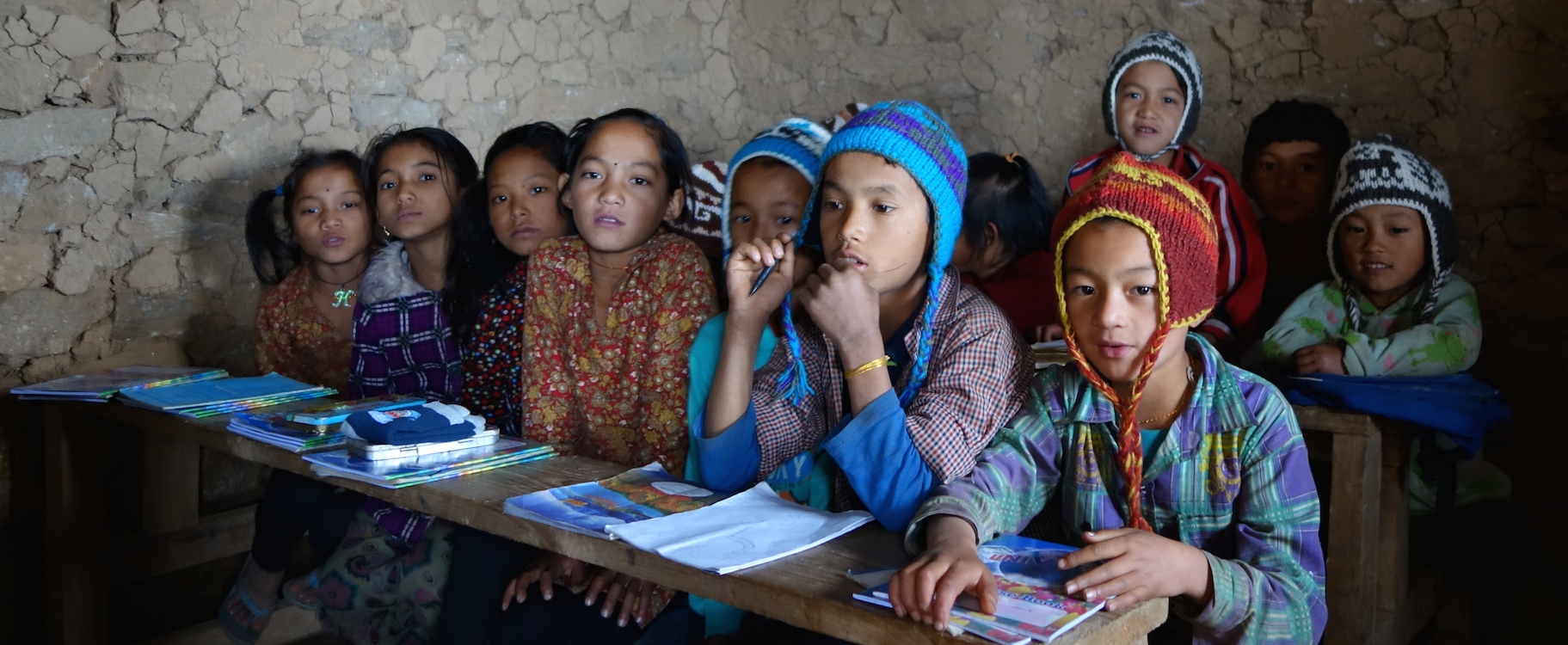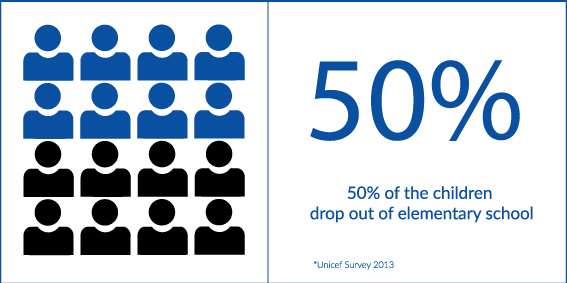The first three school years are paid by the Nepalese state. Assuming that there is a school that the children can reach, which in remote mountain regions is a problem.
The school system is in three stages. Schooling is compulsory up to the age of 10. Thereafter it is voluntary. From the fourth class, families must meet the cost of schooling themselves.
So much for the role of the state. In theory.
The reality looks very different. With a daily average income of less than a dollar, most families are forced to put their children to work from a very early age, just to make ends meet. There is simply no money for education.
The figures make this alarmingly clear.
Two millionen children in Nepal are absent from school because they are needed by the families to support their daily existence. Only 50% of children manage to complete their basic education. The rate of literacy is accordingly only 48% (UNICEF Survey 2013).
The percentage of girls attending school, lies well behind the boys and the drop rate amongst girls is also higher. Here, the reason is the extremely early age of marriage, often as early as 10 or 11. Almost half of 15-19 year old girls are already married.
The majority of teachers are male, which also acts as a disincentive to girls to attend school. Another reason is the simple absence of separate toilets. These disadvantages lead to a reduction in the life expectancy of women to 52 years, four years below that of men.
We are nevertheless convinced that equality of rights and opportunity for girls and boys are fundamental cornerstones of a functioning society.
Without adequate access to education, these children are trapped in a vicious circle of poverty and hopelessness. Child labour also robs the children of their pride and respect.
The children don’t have a childhood as we know it. They lack the prospect of a life that gives them hope of achieving their aims. A life unimaginably hard and deprived.
They are often badly or even undernourished. They freeze because they lack adequate clothing. Their standard of hygiene is often questionable.
Nevertheless, the children are the solution to their problems. To regard them with pity fails to achieve anything. Instead we need to encourage them to believe in their abilities.
And it is here that we are working.


